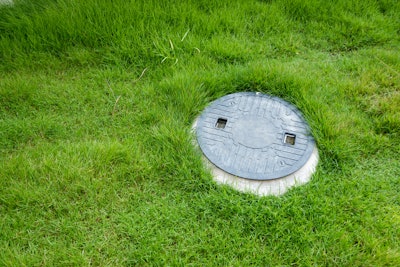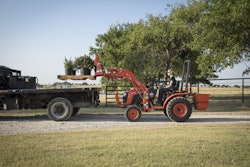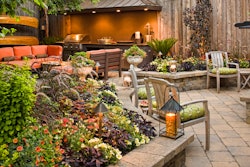
The myth is that you shouldn’t plant or install anything at all near or around septic systems if you want them to be able to work properly. To a point that is true. If you’re talking about a patio, sports court or swimming pool, the answer is no, don’t put those near the septic system. However, if you’re talking about a few plants to liven up the area, those can actually prove beneficial.
If plants are close enough to the septic system, their roots can actually help absorb excess water and nutrients from the soil, which will help with erosion.
However, there is a right and wrong way to go about planting near septic systems, so take a look at a few rules to keep in mind when working with your customers to make their system area look more appealing.
Trees and plants
Much like the foundation of your customer’s home, tree roots can grow deep down and damage the pipes and tanks in a septic system, which means you want to steer clear of planting trees with deep roots in the area.
Even if it’s a smaller sapling, the roots can sometimes grow very quickly, such as white oaks, hickory, walnut, evergreen figs and more. Because of this, it’s recommended that no trees be planted closer than 30 feet away from a septic system.
If you want to stay on the safe side regardless, consider talking to your customer about only having trees in the landscape that are known to have roots that won’t grow quickly.
Another good rule of thumb when choosing plants to go near a septic system is to pick out plants with shallow roots that won’t require a lot of water.
If water-craving plants are near a septic tank system, they could potentially send their roots down lower into the ground in search of water or days when they feel particularly parched, which could spell out trouble if they end up disrupting the system’s pipes.
Plants that require ample watering can also cause a problem because of the excess of water that will be present in the area. It’s best to keep the drain field free of as much additional water as possible, as it can interfere with the job the system is already working to do.
The best options to suggest to your customers are drought-resistant plants with shallow roots, which can include ground cover, flowering perennials and annuals and herbaceous perennials.
Grass, gardens and maintenance
Overall, the safest method for sprucing up your customer’s septic area is to add in grass to cover the space. Grass will quickly absorb excess moisture from the soil, which will allow it to continue to process wastewater efficiently.
Regardless of where you’re located, there should be multiple grass options your customers can choose from. Just make sure that whatever they choose will be easy to care for, as you won’t want anything that will require bringing mowers and other heavy equipment to the area for maintenance purposes.
Customers might see the open area around their septic system, hear the idea of planting something there and immediately think they should add in another garden since that space is free. Heavily advise against this, though. The most obvious reason being do your customers really want to grow vegetables on a space where their septic system is the source of fertilizer?
If customers ask about the addition of raised beds in the space as an alternative, remind them that the extra weight of the beds could compromise the pipes below that run from the septic tank to the field or the tank itself.
As you would when performing maintenance on other plants in your customer’s landscape, be sure to keep tabs on their septic system and remind customers to check it routinely.
Remind them that it needs to be professionally inspected for issues and pumped out periodically. According to the Environmental Protection Agency (EPA), it’s recommended to have your septic system inspected every one to three years and pumped every three to five years.










